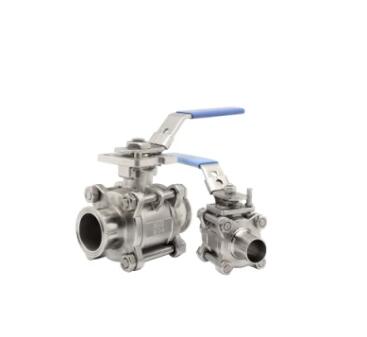The limitations or disadvantages of ball valves
2023-11-03
While ball valves offer numerous advantages, they also have certain limitations and disadvantages that should be considered when selecting a valve for a particular application. Here are some of the limitations of ball valves:
1. Limited Control: Ball valves are primarily designed for on-off applications and may not provide precise control over flow rates. Their ability to regulate flow is more limited compared to specialized control valves, such as globe valves.
2. Cavitation Risk: In high-pressure applications, ball valves can be susceptible to cavitation. Cavitation is the formation of vapor bubbles due to rapid changes in pressure, and it can lead to erosion and damage of the valve components.
3. Throttling Efficiency: While ball valves can be used for throttling (partially opening or closing), this is not their primary function. Operating a ball valve at partial open positions can lead to uneven wear and potential damage over time.
4. Seat Wear: The seals or seats in ball valves can wear over time, especially in applications with frequent cycling or high-velocity flows. This can lead to leakage and reduced shut-off capabilities.
5. Directional Flow Limitation: Ball valves are typically designed for bidirectional flow. While they can handle flow in either direction, they may not be suitable for applications that require strict flow direction control.
6. Size Limitations: Very large ball valves can be heavy, challenging to operate, and may require significant torque for opening and closing, which can necessitate larger actuators and associated infrastructure.
7. Cost for High Temperatures and Severe Service: In extreme conditions, such as high-temperature or high-pressure applications, ball valves may require special materials and construction, which can increase their cost significantly.
8. Fluid Compatibility: The choice of materials in a ball valve is essential to ensure compatibility with the fluid being controlled. Some fluids may be corrosive or chemically aggressive and may require special materials, which can add to the cost.
9. Risk of Freezing: In cold environments, any moisture left in the valve body can freeze and damage the ball valve, preventing proper operation.
10. Maintenance Complexity: While ball valves are generally low-maintenance, when maintenance is required, it can be more complex than with some other valve types, such as globe valves.
It's important to carefully assess the specific needs of your application, considering factors such as fluid type, pressure, temperature, flow control requirements, and frequency of operation when selecting a valve. In cases where precise control or specialized features are necessary, other valve types like globe valves, butterfly valves, or control valves may be more suitable despite their own set of advantages and disadvantages.



